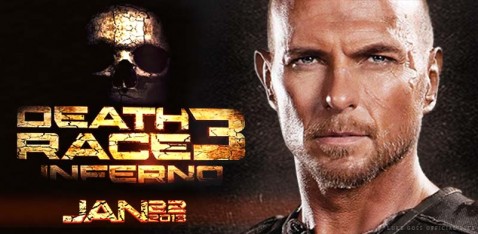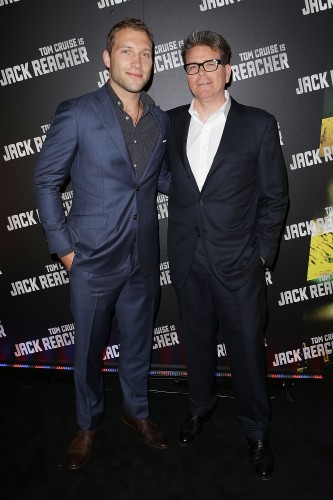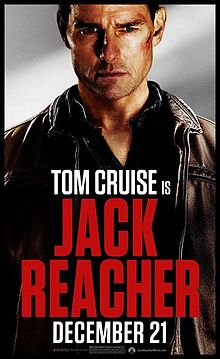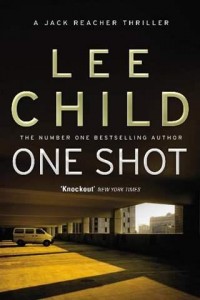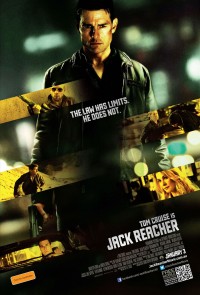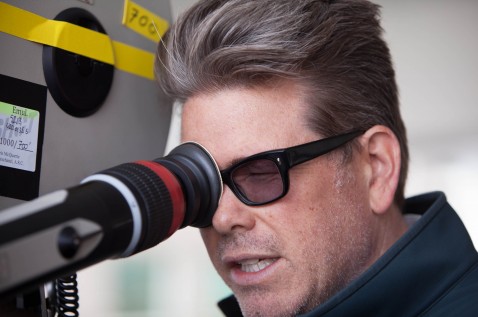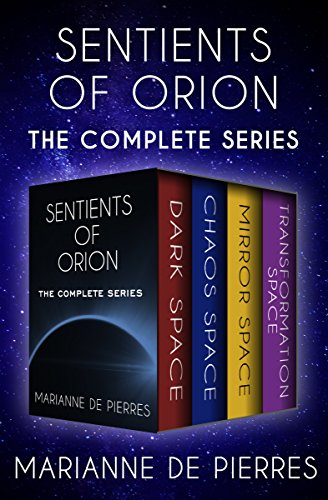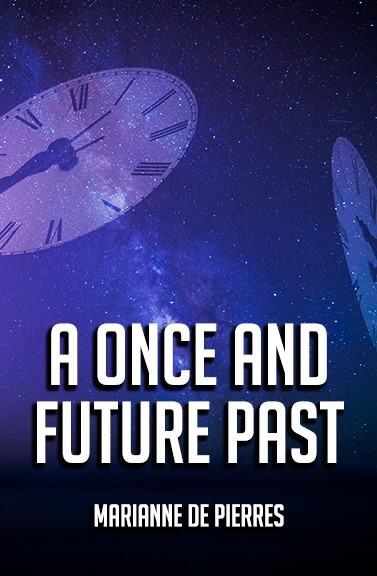Jorge Duran from Spotlight Report interviews actor, Luke Goss about the new Death Race movie. (Thanks to Bec Stafford for transcribing).
Luke: Jorge, nice to speak to you, brother.
Jorge: Nice to talk to you, and thanks a lot for your time, man.
Luke: Likewise. Thank you.
Jorge: Okay, let’s get down to business. I saw your movie during the Christmas break. It was fun. So I wonder how hard it was for you to take part in this franchise after Jason Statham?
Luke: Um, I think the first movie was harder because we had to kind of tie it in to the previous movie; Or, you know, we were trying to tie in the Jason Statham movie… We were trying to make it somewhat kind of synonymous with the same story.
And then, this one was easier because Roel Reiné, the director and myself had a friendship. We hung out in Los Angeles together. And I’m producing other projects myself that he’s directing. So there’s a relationship there, and we said, ‘let’s make this one more of our own, you know?’ And also, the previous movie we did… He was just a man who finds himself imprisoned, and then he has to learn the ropes. Whereas, in this one, he becomes somewhat of an iconic character as far as like… He’s more of an anti-hero character. And I could make him more stoic and a bit more kind of cinematic, I think. And I think using Africa as Africa, the character as a bit more cinematic, I thought it just lent itself to making a more entertaining, more exciting kind of a movie. And I think we did that, you know. It’s my favourite of the three, for sure.
Jorge: Yeah, sure. Before you started doing the second one, and this one, did you get to talk to Jason, or did you get any advice from the previous cast?
Luke: No, because to be honest with you, if you see all three movies, Jason Statham’s character was not the original Frankenstein. You know, obviously, in this movie… Frankenstein is basically a franchise… So it doesn’t matter, really, or at least they don’t think it matters who that character is, as long as the fans see him. So, for me personally, I just wanted to make him my own. I didn’t need to tie it into Statham’s portrayal, because it’s not relevant. Because Part 2 and Part 3 are prequels to the first movie.
Jorge: Mmhmm, I understand.
Luke: It’s really leading up… You know, you’ve seen the movie?
Jorge: Yeah.
Luke: So you obviously understand what happens at the end: he’s replaced. And then it happens again with Jason’s 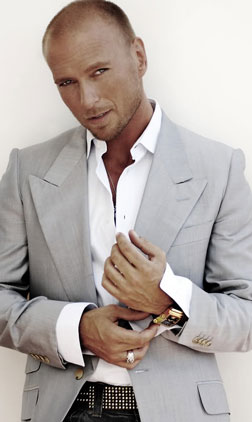 character. So, you know, within the story and the franchise now, Frankenstein is replaced many times. And I think, you know, maybe two or three times Statham’s character steps into that character, which means I had complete freedom to make him my own, you know.
character. So, you know, within the story and the franchise now, Frankenstein is replaced many times. And I think, you know, maybe two or three times Statham’s character steps into that character, which means I had complete freedom to make him my own, you know.
Jorge: Mmhmm. And speaking of Frankenstein, what does it feel like to don the mask? Like, does it liberate you, as an actor, to do more stuff?
Luke: Um, I’m not a fan of it, to be honest with you. I think it really helps the character when you see him show up, and it gives him mystique. But really, he understands why he wears it. Like, I changed my movement… I changed everything when I went in the mask, just to create mystery, both to the audience, but also to the characters within the story. They’re not meant to know it’s me. You know what I mean? And so, he changes his voice, he changes his movement, ‘cause it is a true disguise. But when you’re doing a fight scene in the movie – and I did all my own stunts in this one – and it was just really, really limiting as far as how you can breathe, how you can see. It’s not my favourite thing to wear, that’s for sure.
Like, when I was doing, say, for example, Hellboy, that make up moves. It moves and when I have an expression, that has an expression. With this mask, it’s 100% down to movement. So, I think it works really well in the film, but I can’t say I personally enjoy wearing it. It’s not very comfortable.
Jorge: Of course. Let’s go to the beginning of this thing. When you got the script, what was the most appealing thing about joining the franchise?
Luke: Um, the first one… I just thought it’d be a fun thing to do. I thought I was kind of right for the part. But this third movie… When I read the story… I just think it really ties in Part 2, Part 3, and the first story. Like, 1, 2, and 3 now make sense, I think. I think it really gave a great deal of insight. Like, the second one was fun, but some people were confused about the prequel element. But when I read the third script, it was kind of like, ‘Okay, this makes sense of it all.’ Or, at least, it did to me. It made sense of the story. And it gave certainly me an understanding of the entire franchise. You know what I mean? I mean, how Frankenstein came about, what he becomes, what the whole franchise does become eventually, as far as the entertainment that it is to the fans… as far as within the movie of the fans, not necessarily the fans in the world.
So, I just liked the fact that it tied it all up and made sense of the three stories.
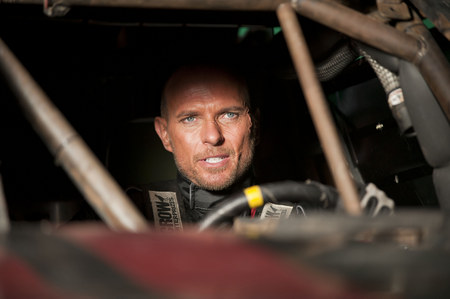 Jorge: Yeah, it works perfectly. It makes a lot of sense. Well, you mentioned that you did your own stunts in the film. Did you also get to do your own stunts while driving and doing explosions and things like that?
Jorge: Yeah, it works perfectly. It makes a lot of sense. Well, you mentioned that you did your own stunts in the film. Did you also get to do your own stunts while driving and doing explosions and things like that?
Luke: Yeah, I mean sometimes. It gets to a point where… Universal… I love working with that company. They’re very protective, though, when I’m filming. They’re like, ‘No, no, no – Luke’s not doing this.’ And I’m like, ‘please, let me do this.’ So, sometimes I can and sometimes I can’t. Like, I did some of the driving, which I think you can tell. In the footage, you can see it’s me driving inside the car. But there are some things that are simply just too, too dangerous. I mean, I did roll the vehicle once. We were doing 45 mph, and I rolled the car accidentally, which was very, very bloody scary. I was really afraid at the time. Because, the noise and the… We had a small engine fire and my driver’s side window was on the ground. So I was looking up at the passenger window, up at the sky.
Jorge: Wow.
Luke: And we had an engine fire and we were at least 500 or 600 yards from any ambulances, or any fire trucks. And that’s in the Extra Features in the DVD and the Blu Ray. That actual shot is in the Extra Features. So, I think that’s kind of cool. But that was not deliberate, and I have to say I was pretty shaken up.
Jorge: I can imagine that (laughs). Well also, we are huge fans of Danny Trejo, and I’m wondering if you could share some experiences of working with him.
Luke: Well, the thing about Danny is he’s a really tough guy. But at the same time, as a person, he’s a real sweetheart. He’s a very caring, supportive man and actor. He loves what he does. He always brings it every day and he’s always fun to be around on set. He jokes a lot and he’s genuinely a really funny guy. And I think that anyone who works with Danny will tell you the same. He’s just an absolute sweetheart. And, you know, it’s kind of cool because he’s a badass. I mean, he genuinely is a badass. But his spirit is a really beautiful one, so it’s now my second movie with him and there’s a friendship there. So I think really highly of Danny. I think he’s a great guy.
Jorge: You’ve also worked under the direction of Guillermo del Toro, who is a personal idol of mine, on Hellboy 2. So, I wonder if you can look back and tell us what it’s like to work with him and how much freedom he gives you in the films.
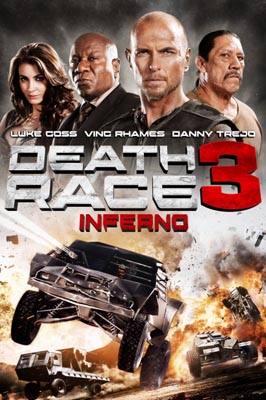 Luke: Um, I think del Toro’s freedom that he offers you is dependent on your commitment to the character. I think if he believes that you’re committed, if he believes that you give a fuck, or give a damn… As soon as I speak about del Toro, I start cursing. Look at that. That’s funny.
Luke: Um, I think del Toro’s freedom that he offers you is dependent on your commitment to the character. I think if he believes that you’re committed, if he believes that you give a fuck, or give a damn… As soon as I speak about del Toro, I start cursing. Look at that. That’s funny.
If he believes that you’re committed and if he believes that you’re bringing your A game, and that you’re really invested, then he’ll listen. If you’re somebody on set just there to be told what to do, then, my god, he will tell you what to do. Because he knows what he wants. He knows exactly what he wants. But, I was blessed enough to have a good rapport with him. So there would be discussions and debates about characters, because he knows me. Any character that he delivers for me to try and bring to life… I feel like it’s a great honour. So my commitment is huge to that process. And he is a collaborator. But he really knows what he wants. So the discussions are about how to achieve that kind of dream, or that vision that he has. But he’s also still open to ideas that might be better, you know? So he’s a beautiful man to work with, for sure. The two movies I’ve made with him have been incredible experiences, for sure.
Jorge: Are you still in touch with him?
Luke: Not so much. I mean, the thing about Guillermo is, he’s always so busy. When you’re done with a project, he kind of goes on to the next thing, and that’s where his head’s at, you know. And I’m sure some people bug him, but I’m the kind of person that… I mean, I love the guy, and I think we have a genuine friendship, but I’m not the kind of man that’s going to be bugging him, you know, on a daily basis, ‘cause I think he’s so enveloped by his projects that I’m like, ‘Okay – I’ll see you next time, brother.’ It’s that kind of energy, you know?
Jorge: Mmhmm, perfect. Well, after seeing Death Race 3, the ending’s very open in linking to the first movie. So, I wonder if there’ll be a Death Race 4?
Luke: Well, there has been talk of it. I know for a fact that there has been talk of it because I think what happened with the second one… People were surprised that it was as good as it was and that it did really well. And so then they were like, ‘Okay, let’s do another one.’ And I kind of felt after this that I don’t think I’d do another one. But when I saw the third movie, I was genuinely kind of pleasantly surprised about how well it turned out. There were a couple of ideas that Roel and I had discussed that would really kind of shake it up as far as the kind of movie it is and take it in a different direction. And if that was something that the studio was into and, you know, it was written really well, and cleverly, then absolutely… That would be something that I would consider for sure.
Jorge: Mmhmm. Following that question, what’s next for you? You have any other [can’t catch that bit, sorry].
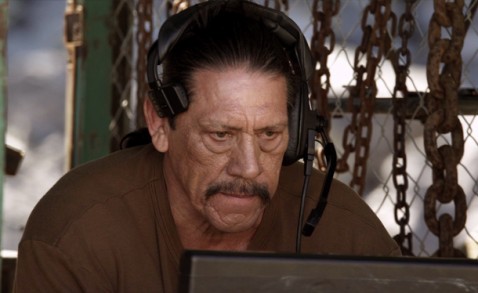 Luke: Yeah, I have a few things. I have a movie called Interview with a Hitman that is coming out in the United States. I don’t know when it’s coming out in Australia, but it’s coming out in the United States in March. I have, obviously, this movie. We got a movie called Inside, which is like a paranormal thriller… Which is really kinda cool. I’ve got an action movie I’ve just completed… I’ve actually got one more day of filming on Saturday. This weekend. In LA… called Dead Drop… Which is kind of like a thinking man’s action movie, which I’m really, really proud of. It’s got Cole Hauser and Nestor Carbonell from Lost – he’s in the movie, too. But I play the principal role of a CIA operative that has been in deep cover for like 2 years in Mexico.
Luke: Yeah, I have a few things. I have a movie called Interview with a Hitman that is coming out in the United States. I don’t know when it’s coming out in Australia, but it’s coming out in the United States in March. I have, obviously, this movie. We got a movie called Inside, which is like a paranormal thriller… Which is really kinda cool. I’ve got an action movie I’ve just completed… I’ve actually got one more day of filming on Saturday. This weekend. In LA… called Dead Drop… Which is kind of like a thinking man’s action movie, which I’m really, really proud of. It’s got Cole Hauser and Nestor Carbonell from Lost – he’s in the movie, too. But I play the principal role of a CIA operative that has been in deep cover for like 2 years in Mexico.
So, we filmed the whole movie in Mexico, which is my second project there. I think we’re doing three more films in Mexico, which is great, which is exciting. But it’s called Dead Drop, which I’m really, really proud of. And I have a movie called Lost Time and another one… A TV show for ABC called Red Widow, which premieres on March 2nd here in the United States on ABC. So, that’s my first ever TV show, so that’s kind of fun.
Jorge: You sure have been busy.
Luke: Yeah.
Jorge: Okay, just to wrap it up… Of all your films which one would you say was your favourite one, or your most rewarding one?
Luke: I think there’s two. Well, three. Blade 2 was definitely one that was kind of my first introduction to a successful Hollywood movie. But I think I’d have to say that it was two movies. It’d be Hellboy 2. And I did a love story. I don’t know if you’ve ever seen it or heard of it. It’s the story of Esther. It’s called One Night With the King… Which… Just the message in the movie was just so beautiful and it’s the story of Esther. And we filmed in India for four and a half months. It’s called One Night with the King, which is, I don’t know, just a beautiful story. And what it stands for.
Jorge: I will check it out.
Luke: I’m glad I have that in my resume. But I think Hellboy and One Night with the King are the two favourites so far.
Jorge: Okay. So, the last two questions. We always ask these of people we interview. So, the first question is: have you ever had any crazy requests from a fan, or a funny story to share?
Luke: Oh my God – Of course. When I was younger I had a… I mean, thankfully, you know… It’s er… I don’t know… I’ve walked into my room before in a hotel and there’ve been people there, just kind of waiting. I guess I’ll leave it up to the imagination of whoever’s reading this to work out what they were waiting for, but um… I have. Girls have asked me to sign their boobs and, you know, what are you going to do? I guess you’ve got to be polite about it, right?
But there are loads of funny stories. It just comes with the territory, I think. You know, people asking you to do some crazy things.
Jorge: Just to finish, do you have any advice for any young Australian actors who’d want to follow in your footsteps?
Luke: Any actors?
Jorge: Advice for actors who are starting out in the industry.
Luke: I think the thing about it is that you have to one – try to be as good as you can at what you do, obviously, like anything. You have to take it seriously. I think… With Australian actors for me…In my experience… I don’t think I’ve really ever acted with any Australian actor who’s not talented. There’s something… There must be something in the water over there. Because most Australian actors I’ve worked with are just really gifted and really talented. So I think it’s a case of… You need an agent. You have to have representation. Without doubt. And I think it doesn’t hurt to just make sure that you get experience. It’s , like, whether it be a play or a short movie… It’s about experience and getting yourself on the map. And you need representation that believes in you. But it’s a business, just like anything else. And I think a lot of people say, ‘How do I get…’ If their only motive is to be famous, then I don’t really have advice for that. But if they want to be successful actors, then they’ll get that for free. That comes with it. But they do need to be good at what they do, and they do need somebody that believes in them, and they need to work… Whether it be plays… They can’t have… You can’t set your standard at the beginning with what you do. You just have to be good in that thing, whether it be a tiny little play or a small independent movie or independent short… Whatever. Experience is experience is experience, you know?
Jorge: Perfect. Okay look, thanks a lot for your time and thanks for your answers. When will we see you here in Australia? When are you coming out?
Luke: Listen, whoever’s reading this: If someone’s got a … (desire) for me to be there, bloody make a call. Because I’ve only been there one time in my life. And it’s been 15 or 20 years since I’ve been there, so I would love to be in Australia again. So, maybe you could help find a … me…
Jorge: Okay, we’ll check it out.
Luke: Much love and Happy New Year.
Jorge: Okay. All the best. Cheers. Bye bye.








